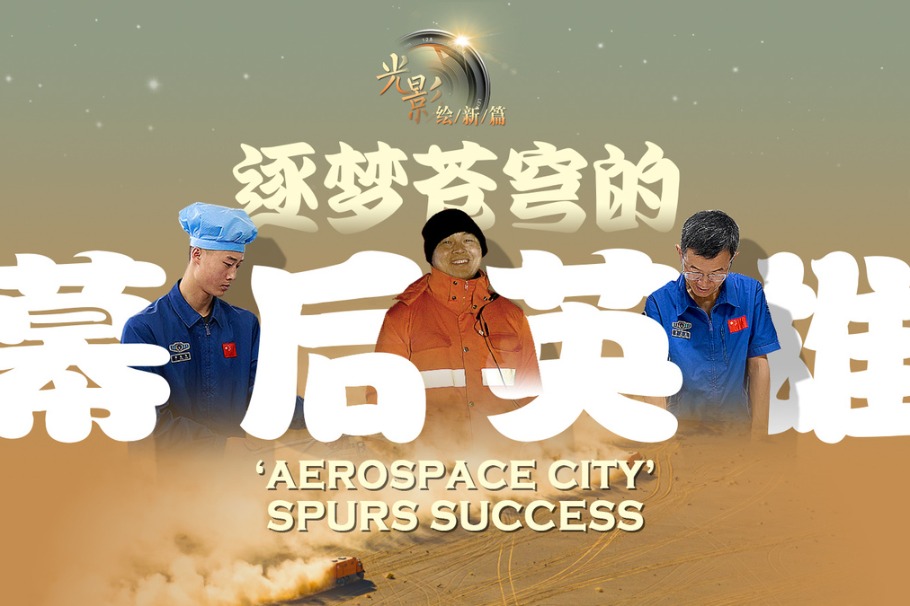Integration of disciplines leads to breakthroughs in cutting-edge research

The scientific and technological breakthroughs being made by experts at University of Science and Technology of China are helping China catch up with the world's most advanced nations.
One of the remarkable achievements at USTC has been developing Micius, the world's first quantum science satellite, which was launched on Aug 16, 2016.
The 640-kilogram satellite - named after the ancient Chinese scientist and philosopher Micius, or Mozi - serves multiple scientific purposes, including testing the technology that distributes quantum keys, which can be used to encrypt data between the Earth's surface and space.
Thanks to the satellite, China has become the first country to establish photon entanglement at a distance of more than 1,200 kilometers between ground and space, paving the way for ultrasecure, long-distance quantum communications.
This was a huge step forward in the country's plan to build a space-based quantum communications network, scientists said.
"The satellite marked a transition in China's role from a follower in classic information technology development to one of the leaders guiding the future IT achievements," Pan Jianwei was quoted by Xinhua news agency as saying. Pan is the executive vice-president of USTC and member of the Chinese Academy of Sciences, who led the university's quantum communications team.
According to the university, the world's first 2,000-km quantum communications line went into formal operation last year, serving as the backbone connecting Beijing and Shanghai. And more breakthroughs in quantum communications are expected.
Due to the attenuation of optical fiber, relay stations are needed to extend the distance of quantum communications. There are more than 30 relay stations on the Beijing-Shanghai line, with an average of about 80 km between them, according to Xinhua News Agency.
Pan's research team is working to extend the distance between two stations to between 300 and 500 km, to cut the number of relay stations and overall costs.
China sees scientific innovation as a primary driving force for economic development. In recent years, the country has introduced a series of effective measures to improve its scientific and technological capabilities, especially core technologies in key sectors.
As a vital part of the strategy to build China into a country of innovation, USTC is firmly focused on the development of cutting-edge technologies. It has been hailed as one of the best universities in China for its science and technology research.
In addition to quantum communications, USTC has accomplished many other innovative projects, such as the Tiangong II space laboratory quantum key distribution test project, China's first dark matter particle exploration satellite Wukong, the multiphoton entanglement and interference measurement project, and the quantum entanglement and quantum cryptography communications project.
USTC has also played a leading role in nanotechnology, high-temperature superconductivity, speech technology, fire sciences and life sciences.
"USTC has attached great importance to the fusion and integration of disciplines, breaking the boundaries of subjects. This not only helps the disciplines develop to a higher level but also promotes scientific innovation," said Zhu Jiping, deputy director of USTC's science and research department.
"The university has constructed high-level labs, research facilities and institutions. These are all good platforms that allow scientists to explore and make original innovations in many unknown realms."
USTC is among the Chinese universities with the highest number of national-level labs and high-profile facilities for science research.
The university is currently building a new national lab for quantum technology alongside its two existing national labs: the National Synchrotron Radiation Laboratory and the Hefei National Laboratory for Physical Sciences at the Microscale.
Other endeavors include exploration into integrating basic science and engineering with medicine. A faculty of life sciences and medicine is also being built in partnership with the Anhui provincial government, the National Health Commission and the Chinese Academy of Sciences.
Zhu Lixin and Fan Qiong contributed to the story
- Chinese scientists use AI algorithm to better predict unknown tumor origins
- Opening of new flight routes benefits both sides of Taiwan Strait
- Obesity and mental illness on top of health concerns in Chinese youth
- China and US begin talks to send giant pandas to San Fransisco
- China activates emergency response to flooding in southern regions
- Former vice president of China Development Bank indicted for bribery




































